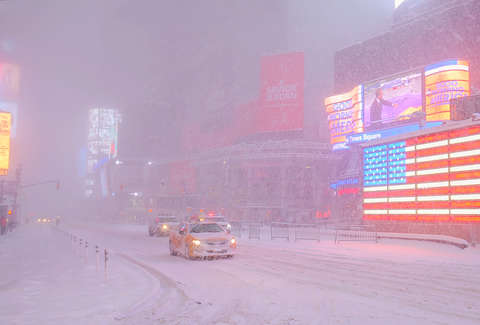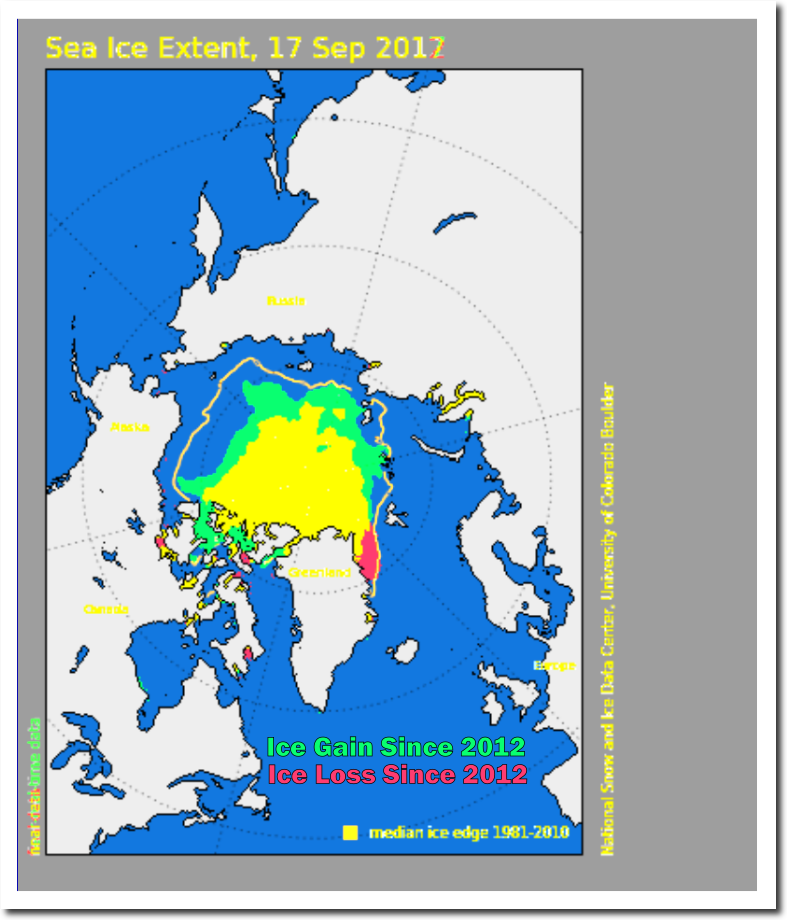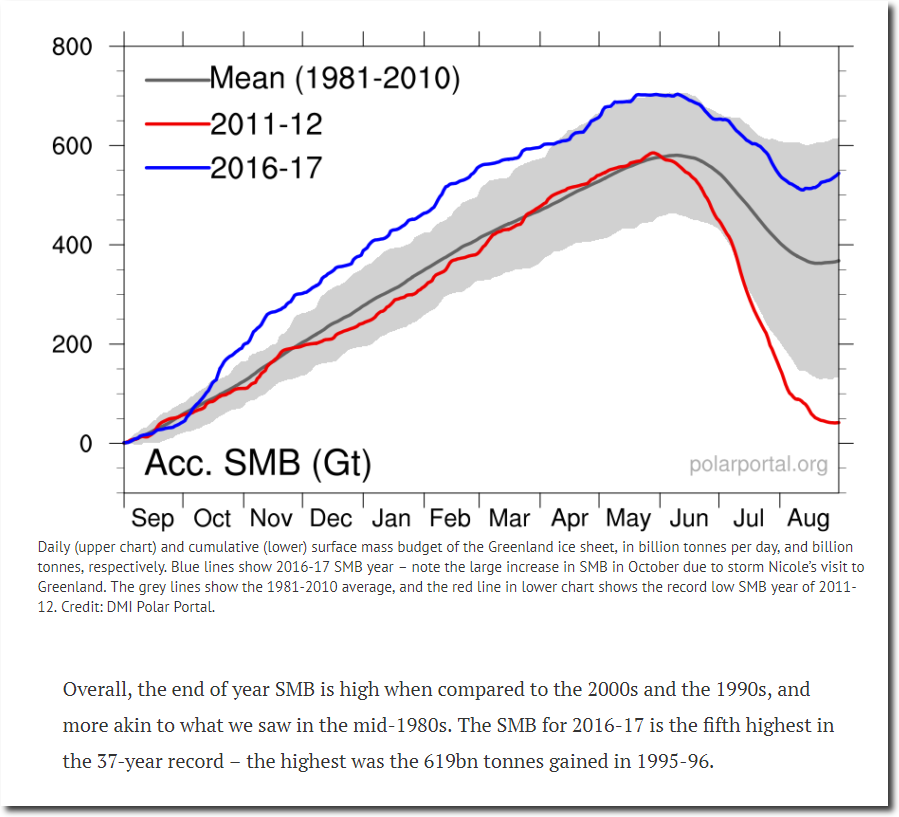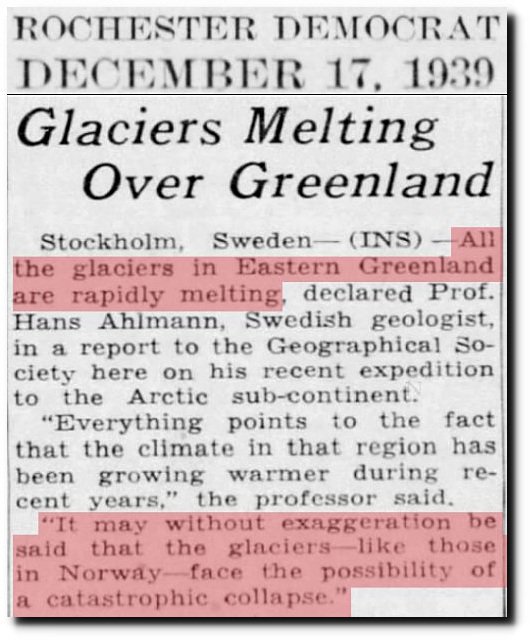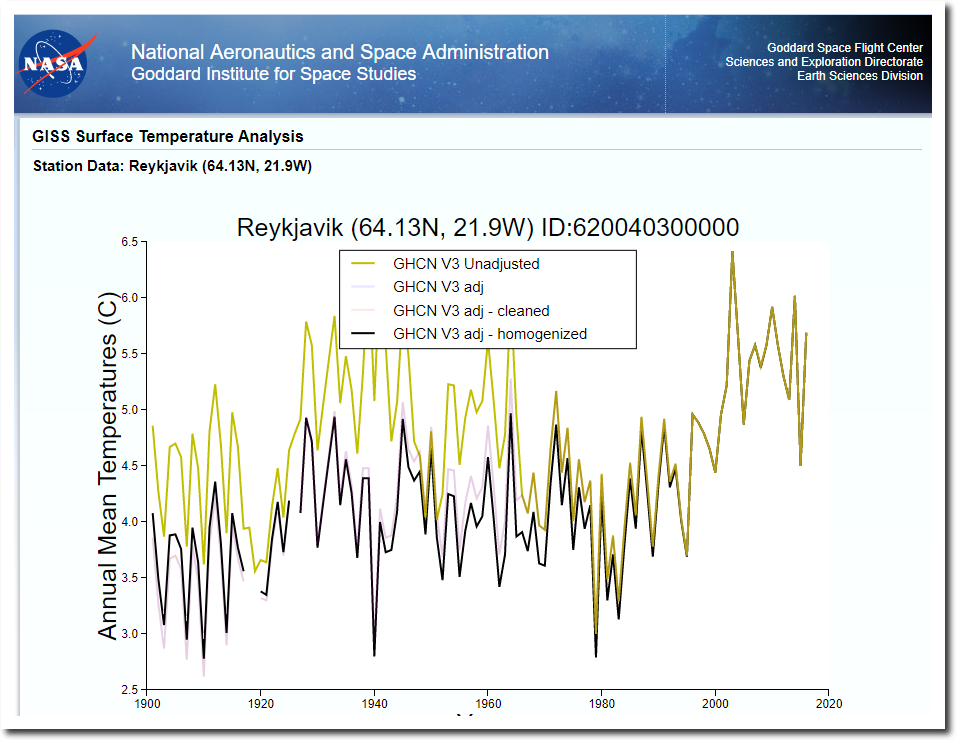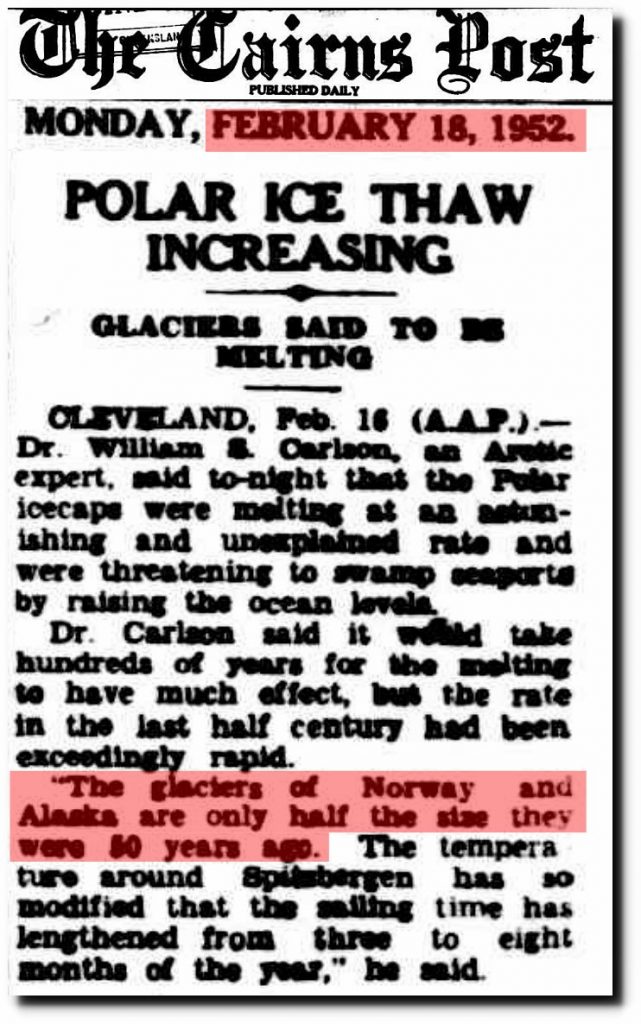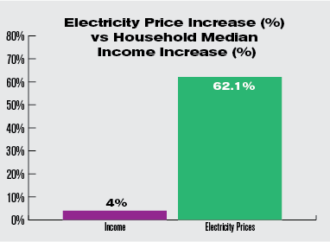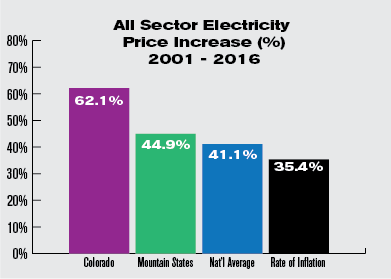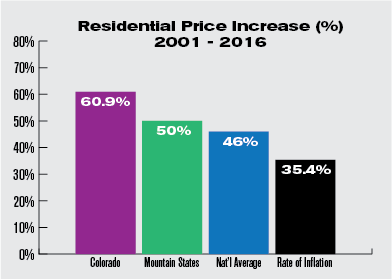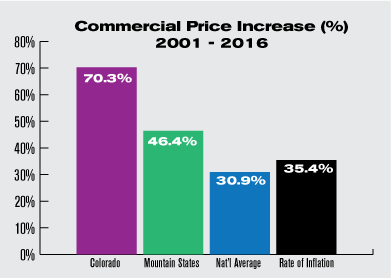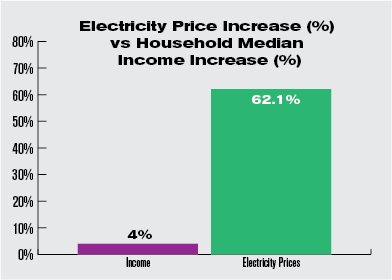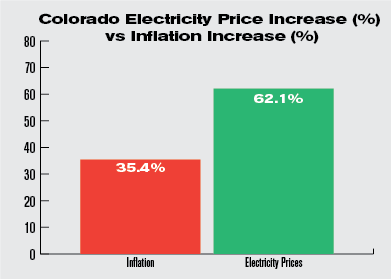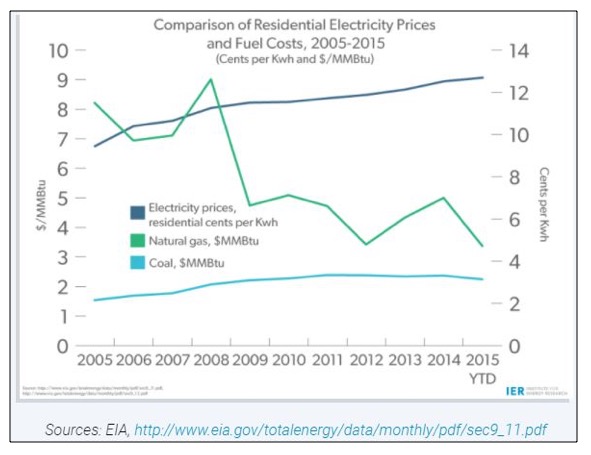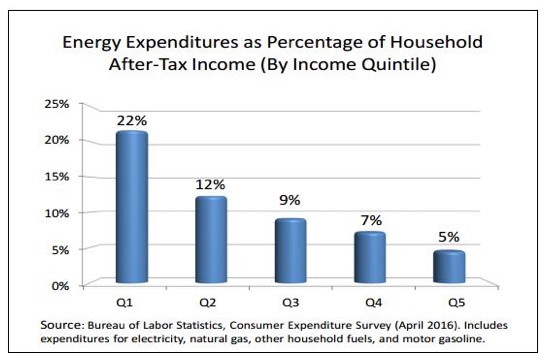Every State, Ranked by How Miserable Its Winters Are
In most of America, winter sucks. It is cold out. You don’t feel like doing anything, so you get fat.
Pipes freeze. Lips, noses, and cheeks get chapped and raw. Black ice
kills. Snow hats look cool until you have to take them off indoors and
then your hair looks shitty. It’s horrible.
As two people who grew up in the Midwest and New England,
Matt and I have both experienced the personal hell that is winter’s
awkwardly long, frigid embrace, but we had yet to figure out which,
amongst all of the 50 states,
could hold up the title as the state with the worst winter. And so
began an intense period of research and debate, factoring in everything
from weather patterns, average temperatures, and how effective and
quickly their department of transportation clears highways, to
interviews with locals and the historical success rates of their
winter-season sports teams. This is one of those things where you
probably actually want to finish last.
Anyway, feel free to tell us all the ways our list
is invalid in the comments. We’ll just be over here looking cool as hell
in our winter hats.
50. Hawaii
Aloha means hello, goodbye, and “who cares about pro sports teams when
the average temperature during the winter is 81 and we’re all over here
eating malasadas and making fun of you stupid cold haoles.” It IS kinda windy though?
49. Arizona
Occasionally, retired Kroger business executives from Ohio and their
Pilates-instructor second wives will accidentally move to Flagstaff and
get very sad and angry when they realize the average winter temperature
is somewhere in the 20s. But most of Arizona offers up that dry desert
day heat (it was 88 in Phoenix last week) that is good for arthritis and
any lingering guilt about leaving their first wives to deal with their
delinquent teenage kids back in Indian Hill.
48. California
There is no generalizing about the climate of a state the size of Italy,
except to say that SF’s weather rarely changes except during the weird
time during the summer when it becomes winter and everyone misquotes
Mark Twain; everyone in LA and San Diego just wear bikinis and surf to
work year-round (except during Sharknado season) and they don’t have
meteorologists in Fresno, so no one knows what happens there during any
season, much less ONE of them, but it seems like it can't be that bad.
47. Colorado
Yes, this seems like an odd placement for a state that clearly
experiences some serious snowfall, but the thing is, snowfall is a cause
for celebration here. Have you ever been to Colorado in wintertime? The
sun is shining, the winter sports are world class, and if people aren’t
(legally) high as balls, then they’re getting into some fantastic beer.
They even threw in a 2016 Super Bowl for good measure -- that’s “they,”
not Peyton Manning, who, rumored HGH notwithstanding, wasn’t able to
throw much of anything. Ditto his successors. But the Broncos
quarterback situation aside, Colorado has basically solved winter.
46. Florida
Seeing how it’s mostly a humid subtropical state
filled with the type of people who unironically adorn their cars with
statement bumper stickers and don’t blink for long periods of time,
Florida’s winters tend to be mild, as if actively trying not to make any
sudden moves lest their population get nervous and start throwing
alligators.
45. New Mexico
Did you know that New Mexico is basically Colorado? And I don’t mean
that as in they both tend to attract spiritually earnest people who
value physical fitness and have weirdly nice calves and prefer to be
outdoors wearing shawls with Native American symbols on them (though
that is also true). I mean, in the sense of topography, New Mexico and
Colorado both have high plains, mountain ranges, deserts, basins, and affiliations to green chile.
And though New Mexico gets warmer during the day,
you can still see why people from these two states tend to live charmed
winter lives/dislike each other, even as you struggle to tell them
apart.
44. Louisiana
You think they’d have Mardi Gras
in February if that wasn’t an ideal time for a party?!?!! Wait -- what
do you mean “it’s set by the church calendar to always fall the day
before Ash Wednesday?” Well, you think they would’ve petitioned the pope
for a change by now if that humid subtropical climate didn’t laissez
les bon temps rouler?!? Yeah, I have no idea either, I guess.
43. Texas
According to a quick eyeballing of the globe I keep in my office, Texas
is roughly the size of South America or something, and you can’t speak
on the weather in Ecuador like it’s the same as Chile, right? West Texas
is mostly arid desert where you can get the occasional blizzard that
shuts down Amarillo, forcing their lauded indoor football team the
Venom, to postpone games. East Texas is subtropical and humid even in
the winter, and they get that cool advection fog in Galveston where you
can’t see shit for days, and all of the ships carrying giant Texas belt
buckles to Mexico are forced to stay put.
Also, when I briefly lived in Dallas during my
youth, it once snowed 4in and I didn’t have school for THREE DAYS and
people were talking about killing their horses and sleeping inside of
them Tauntaun style.
With all that said, outside of the Northern Plains, the average temps
in Texas in the winter usually stay in the mid-60s during the day, and
that’s pretty damn nice.
42. Georgia
Psychologically it seems like Georgia should be safely out of the winter
pain zone, and often that holds true, but freezing rain’s nothing to
mess with, tornadoes somehow continue to be a thing even in February,
and when snow does hit, no city does “wow, we were woefully
underprepared for this” quite like Atlanta.
41. Alabama
The people of Alabama asked the Lord that He make the climate of Alabama
suitable to play football outside year-round and He listened to the
people and granted them a mild winter climate for which to play His
game. Except up in Huntsville.
40. South Carolina
Outside of the Blue Ridge Mountains, most parts of the state will remain
free from snow for years at a time (if something’s going down, freezing
rain's probably the bet). The mild winters are needed, as there is
plenty more to worry about, such as hurricanes, sharks, and other South
Carolinians.
39. Mississippi
North Mississippi got hit with a little blizzard action this winter
(snow tornadoes!), and while that can certainly happen, it’s far from
the norm. And even when a cold snap does hit, people are generally back
to porch-sittin’, sweet tea-sippin’ weather in no time, which could
explain the reliably strong obesity rating. When you think about it, all
that fat is kinda wasted on a state with reasonably painless winters.
Send some north!
38. North Carolina
Few states have a mountain range that acts like a shield preventing strikes of shitty Midwestern winter weather. North Carolina
is one of those lucky states, giving it a relatively mild and tame
winter for its placement up the coast. So it makes no sense that their
state flag looks like the Indonesian flag with a small stripe of blue
instead of a picture of Dean Smith sitting in a Hickory-made rocking
chair atop the Appalachian mountain range with a big hunk of chewing
tobacco and a chopped pork sandwich.
37. Nevada
Other than in the northern reaches of the state, Nevada’s generally
pretty well protected from the worst aspects of winter. However, it is
NOT protected from packs of bros descending on it for Super Bowl weekend
(Chad only gets married once, right guys?!), then getting unruly with
the staff at the Hard Rock because they expected the pool to be open
even though it’s actually only like 49 degrees out. Then Brett (Chad’s
best man) ends up drinking 12 vodka tonics too many and picks a fight
with some guy who seemed small but turned out to be a flyweight UFC
fighter and shit just got ugly.
Misery never really leaves Nevada, is the point.
36. Tennessee
“Take me to another place, take me to another land,” isn’t something
you’re terribly likely to think to yourself during a Tennessee winter,
although they did get clipped by the January blizzard a bit as it made
its way towards the East Coast this year. But hey, when the cold does
strike, there’s always hot chicken,
which all publications are contractually bound to mention when speaking
about Tennessee in 2016, because it’s so hot right now. The chicken, that is. The weather’s usually mild. Which is how you can order the chicken if you’re a wuss.
35. Utah
Like Colorado, you can generally count on the fact that winters will be
packed with sunshine and access to world-class cold weather leisure
activities (2002 Olympics 4 life!). Unlike Colorado, there’s no
unfettered access to weed, and even high-ABV beers have their restrictions.
But hey, at least there’s always some white dude on the Jazz who can
actually ball to keep everyone happy (they’re counting on you Gordon,
NEVER LEAVE THEM).
34. Arkansas
Once in a great while, Old Man Winter will rear his ugly head in a big
way (as it did a few weeks ago), but generally speaking, people need to
be much more concerned about RAMPAGING FERAL HOGS!
33. Oklahoma
The panhandle tends to experience the most cold (hey, just like an
actual pan!), and the rest of the state typically has at least one
serious snow or ice beating per winter, though they typically don’t
linger too long. Bonus: on colder days, locals can humor each other with
clever lines about the wind sweeping down the plain. Actually, nobody
does that. But they don’t have to, because things are, more often than
not, OK.
32. Virginia
Generally speaking, the winters tend to be a little rougher the closer
you get to DC, which could speak to either geography or the
bone-chilling effects of Dan Snyder. The mountains (obviously) also
receive their share of snow, but they’re also quite beautiful and
serene, so that couldn’t possibly have anything to do with Dan Snyder.
31. Maryland
If I had a dollar for every time someone has come up to me and said
“Let’s talk about Maryland’s climate, specifically in the winter,” I
would, as of now, have yet to collect any money. BUT THAT CHANGES TODAY.
Anyway, if you take 68 and go west to Cumberland and farther past, it
can get damn cold and snowy, but around Bawlmore it remains relatively tepid.
Also, has anyone ever looked at the shape of the
state of Maryland? It either looks like the NES Zapper gun from the
original Nintendo, or a broken meat cleaver that’s been boxed out of
oceanfront property by Delaware, of all states. Get your shit together,
Old Line.
30. Kentucky
Kentucky always sounds like a very warm place to Northerners, who
envision temperate climes where you can enjoy hot weather alongside your
Hot Browns while wearing lavish hats filled with bourbon. And then you realize that it’s basically southern Ohio.
29. West Virginia
John Denver once described West Virginia as “almost heaven.” However, he
could have just as easily described it as “almost definitely the place
you’re most likely to encounter terrifying driving conditions on I-77,
inebriated dudes whose breath smells like Gino’s baked spaghetti
haranguing you about Bob Huggins’ offensive sets, and the nagging
feeling that they could have come up with a more creative name for a
giant ski resort than ‘Winterplace.’” However, that would’ve really
altered the rhythm of the song.
28. Missouri
Far enough south to generally be removed from the worst of the worst,
yet the major metropolitan centers are juuuust far enough north that you
can typically count on a few wintry groin punches per season, which is
kind of what it’s like to root for a football team whose coaching tree
prominently features Andy Reid and Marty Schottenheimer. But at least
that Todd Gurley looks like a -- oh... shit. Right, that happened. That
sucks, guys. Pour one out for the Greatest Show on Turf. You’ll just
have to console yourselves with the Cubs of the NHL. Someone get this
state an NBA team so there’s more to do until it’s warm enough for Ted
Drewes and baseball again.
27. Kansas
Being smack dab in the middle of the country means you’re gonna have
smack dab in the middle winters -- sometimes the hammer will come down,
sometimes you’ll be like “hot damn it might hit 80 today.” This causes
Kansans to put particular stock in the unpredictable nature of their
winters, but that’s mostly because there isn’t that much else to talk
about.
26. Delaware
Whenever Delaware gets pasted with a winter storm, you can pretty much
guarantee some other, bigger metropolitan area got it worse, thus
leading no one to notice the plight of Delaware outside of people living
in Delaware. So, it’s basically a colder version of the rest of the
year for Delaware.
25. Nebraska
The Tom Osborne state doesn’t get quite the same Midwestern winter flick
in the privates that you might think it did, were you just pre-judging
it based on that one Alexander Payne film and a vague sense of where it
sits in America. Winters are actually downright moderate in western
Nebraska thanks to the moderating effects of the chinook winds coming
off the Rockies, while people in the east are forced to just hunker down
with their stockpiles of corn and watch old tapes of Coach Osborne
speaking on farm subsidies interspersed with quick clips of Eric Crouch scrambling for touchdowns.
24. New Jersey
Imagine getting on a train on a winter morning, everybody wrapped in
their puffy coats, salty and bleary-eyed. There’s one seat left… between
two dudes who definitely appear to be obnoxious, insufferable assholes.
But hey, it’s a seat, so you take it. Yet, when you sit, you get the
sense both of these guys regard YOU as the asshole. Now imagine that
morning lasts for a few months. This is winter in New Jersey, starring
Philly and New York as your asshole neighbors.
23. Pennsylvania
Pennsylvania has something of a split winter personality. In the east,
you have more of the sharp-elbowed, horn-honking,
battery-in-your-face-even-if-you’re-Santa kind of winter depression.
Farther inland it’s a bit more of a Midwestern mentality, a kind of
“let’s hunker down and get through this” mindset that leads to stuff
like just cramming a bunch of French fries inside a sandwich because
you’ve basically given up, and losing count of how many pierogies you’ve consumed before deciding that must mean it’s time to start over and order more pierogies.
22. Vermont
Vermont has some seriously brutal winters, with most areas averaging
around 8ft of snow. But -- in the same vein of places like Colorado --
Vermonters actually seem to relish in the inability to drive anything
without chains. Partially that’s because Vermont also boasts the best
skiing by far of all of the East Coast, and partially it's because the
over-consumption of maple syrup can do some crazy things to a person’s
psyche.
21. Rhode Island
Unlike the issues in generalizing the climates of some of these large
states, Rhode Island suffers from the opposite sort of problem -- it
basically just gets a little bit of whatever Mass and Connecticut are
having. Also, you can’t enjoy Del’s Frozen Lemonades when your Kia
Sorento is buried under 28in of snow and they’ve completely shut down
295 AND the Providence Place mall.
20. New York
New Yorkers have a way of vacillating between bragging about their
comparatively mild winters relative to some of your other northern
metropolises (your Bostons, your Chicagos), and then switching into
“STOP WHAT YOU’RE DOING NOW AND BEHOLD OUR PLIGHT” mode when some
serious weather comes their way. Meanwhile Buffalo’s
up there under some 30ft of lake-effect snow, just alternating between
hours-long shoveling escapades and quiet moments by the fireplace spent
softly crying about Scott Norwood while taking shots of Frank’s hot
sauce.
19. Connecticut
All of the brutal parts of the New England winter with none of the ski
perks. And yes, we’re counting Mohawk, Ski Sundown, AND Mount
Southington.
18. Washington
“It’s raining, it’s pouring, former Sounders striker Roger Levesque is
snoring” is an actual hit song in Seattle, written during the winter,
and fairly encapsulating everything you can expect from the climate up
there, especially when Levesque sleeps on his back.
17. Oregon
On the one hand, there’s no denying the beauty of magnificent Crater
Lake when observed via snowshoes. Or the thrills of snowboarding down
Mt. Hood or Bachelor. Or staring at the snowy peaks of the Three Sisters
mountains from the comfort of a rustic cabin in the high desert aglow
from a mighty hearth. Or taking a chance on either getting sideways rain
or 70-degree sunshine on the coast. On the other hand, that’s all
counterbalanced by Portland hipsters who bitch about the rain for five
months, yet refuse to buy an umbrella. Which is to say, Oregon winters
are breathtaking. Portland winters, on the other hand, are the kind that
inspire Elliott Smith songs. -- Andy Kryza, Senior Editor/Portland resident
16. Indiana
The Region (that’s the creatively named NW corner of the state bordering
Lake Michigan, for the uninitiated) definitely gets the worst of it --
without warning, a foot of snow will just decide to show up and punch
everyone in the face like a frosty Ron Artest. For a state that grapples
with this kind of thing on a regular basis, I-65, the state’s main
artery, has a knack for turning into an undriveable frozen windswept
hellscape to the point where the state actually shuts it down, forcing
traffic onto equally dubious state highways. If you’ve ever stared into a
barren tundra of a frozen harvested cornfield and thought to yourself
that this could be the beginnings of the apocalypse, well... you are in a
state known to serve up brain sandwiches.
15. New Hampshire
A general malaise creeps into the Granite State once they realize you
can’t race NASCAR when you’re getting 70in of snow, so instead New
England’s most sunburned neck of a state has to somehow get by by
looking through their collections of old Joe Lieberman campaign signs
and hoping Maggie Hassan’s state transportation department plowed and
salted 93.
14. Ohio
You’ve got the lake-effect snowstorms of Lake Erie along the Snowbelt,
which can dump LeBron levels of snow on the Cleve. You’ve got the
moderate cold of the central lowlands and Columbus. But then you’ve got
Cincinnati and it’s basically Kentucky's subtropical humid climate and
wall lizards, which are something most people think of in Florida or
Houston. So basically, Ohio is more like three separate winter regions,
divided in weather, but united in being upset about their NFL teams.
13. Illinois
Chicago winters are notoriously rough), but the people there have the
kind of warm and generous spirit that leads to displays of solidarity
like... fighting over whether or not a pair of plastic lawn chairs
constitutes indefinite rights to a shoveled out parking place
post-snowfall. Downstate things tend not to be quite as bad, other than,
you know, the fact that you’re in downstate Illinois.
Keeping Illinois from an even worse ranking: most of the time the
state’s pretty on-point as far as snow removal goes, and everyone’s pretty good at drinking enough during Hawks games that they forget about whatever recent trouble Patrick Kane's gotten into.
12. Wyoming
There is a case to make that Wyoming could be even higher up the list
considering that, even when it’s just dumping moose-sized buckets of
snow everywhere, it’s so damn pretty to look at the Grand Tetons that
you can’t possibly be miserable. Plus those crucial chinook winds that
bailed out Nebraska also tamper down the bitterest of the cold. It’s
basically like the handsome middle child of the West: not quite as
fierce and cold as its bigger old brother Montana, or as awkward as
Idaho, and somewhat ignorant of the fact that it’s even tangentially
related to the Dakotas.
11. Iowa
Every year in the winter, we inexplicably traverse by car from Chicago
to Iowa to watch an Iowa basketball game. One of these years, there was a
whiteout-style snowstorm en route, and a truck jack-knifed along 80 and
there was the biggest traffic jam in recent Iowa history, which we
managed to avoid thanks to Google Maps all of a sudden nervously
bellowing out that we needed to turn off onto some random farm road.
All of the Iowans we met took this in stride with a
suspiciously friendly Midwest-ness, possibly because Iowa has to deal
with a super confluence of shitty weather: snowstorms in the winter; 50
days of thunderstorms; an average of 47 tornadoes a year (in 2008 there
were 105). I mean, jeez, even Wikipedia calls their winters “harsh.”
10. Massachusetts
Boston winters were brutal enough to push my California-born wife to
hysteria and then eventually back to California, especially the random
late-April snows. And the whole state is nor’easter prone, which I
enjoyed as a kid because the Globe would run a graphic of the snowfall
next to a picture of Robert Parish and his height.
In terms of a divide, you get to pick your poison:
would you prefer slightly warmer winters on the coast with heavier
snowfall? Or brutally harsh Tom Brunansky-bat-to-your-ears cold in
Western and Central Mass with slightly less snow? Either way, the state
tends to do a good job keeping the Pike clear of snow so you can get to
the closest Newbury Comics and buy extra copies of old Dropkick Murphys
albums for your grandchildren, plus the Bruins and Celtics win enough
that you can just lie in the hammock in your partially finished basement
drinking Ocean Spray Cran-Grape juice and Bully Boy vodkas and watch
your bootleg tape of good Shawn Thornton fights until all the
nor’easters are over.
9. Montana
Did you know that the Continental Divide can create distinct differences
in sunlight, wind, precipitation, and temperature, depending on whether
you’re in the eastern or western part of the state? Did you know that,
either way, all the insufferable celebrities who thought it’d be
“rustic” to own a ranch up there or whatever sure as shit aren’t taking
advantage of said property in January. Wait… maybe that’s actually a
positive?
8. Idaho
If you happen to live up at the top of Idaho’s chimney, up Route 2 by
Bonners Ferry or beyond even, wow. You basically live in Canada, and as
such, are in no way protected by those lovely chinook winds we keep
talking about, but might have an in on getting cheaper prescription
drugs, so it balances out. But because most of Idaho is not in fact in
that chimney, and is somewhat comparatively temperate to other western
climes, you get rich West Coast people coming out in expensive fur-lined
ski wear to use your facilities in Sun Valley. And if I’ve learned
anything from watching a combination of those Kardashian shows and HGTV,
rich West Coast people do NOT travel to places with brutal winters.
7. Wisconsin
Look, there’s a reason it’s practically state law that every block in a Wisconsin city or town must have a minimum of three bars
on it. There’s a level of persistently grey, soul-squeezing frigidness
here that can only be combatted with liberal doses of brandy Old
Fashioneds and Spotted Cow along with various forms of fried dairy
products. If you go tailgating at Lambeau when Green Bay’s buried under
feet of snow, you could be forgiven for surveying the relatively lively
demeanor of the local populace and think that everything must be
reasonably cool, but that’s just because all these people have been
intoxicated for 72 straight days, and it’s all going to come crashing
down eventually, likely in relation to some head-scratching playoff game
management courtesy of Mike McCarthy.
6. South Dakota
Your average high temperature during the winter months is four degrees
higher than North Dakota's. You are the champion of the Dakotas. Claim
your slightly less misery-bound throne!!!
5. Maine
More than 80% of Maine’s land is forests. There are entire huge
thousand-mile swaths of land that are uninhabited or barely habited, and
that is because northern Maine has winters that are only really spoken
about in Game of Thrones -- brutal and never-ending and likely on par with The Long Night.
The coast and the south where people actually live
have more moderate winters, thanks to the Atlantic, but the Mainer
attitude towards winter is a great one -- they all seem pretty fired up
to ski and sled despite not getting to eat lobster or blueberries for
many months -- and they tend to be much more upbeat than say, us
Bostonians, who always like to pretend that we’re getting it the worst
and thus are the strongest. And that attitude (and the general lack of
people in the real harsh stuff) prevents Maine and its Longest Winters
from pushing even farther down the line.
4. North Dakota
In Downtown Owl, Chuck Klosterman writes of a sleepy North
Dakota town in which the happenings are fairly mundane until a massive,
unforgiving blizzard sweeps through and (spoiler alert) kills all three
of the protagonists in different horribly depressing ways. The book is a
work of fiction. OR IS IT?
3. Alaska
Look, if you’re taking things from a purely “how bad can things actually
get, weather wise” standpoint, Alaska is obviously the number one
choice here. No other state has vast geographical stretches that can say
stuff like “man, I haven’t seen the sun in months” and have it be
literal rather than figurative. Any data you want to pull on snow, wind,
or cold will trump that of any other state handily.
But here’s the thing -- Alaska draws a different
type of human. Either you’ve got some Inuit blood flowing through your
veins and these types of conditions don’t remotely phase you, or you
have the type of slightly unhinged frontier spirit that leads people to
say “why yes, I would like to live in the place where even summer can
sometimes be kinda winter-ish” or “you know, this Sarah Palin seems like
the kind of no-nonsense straight talker who is 100% capable of running a
state.” You just can’t view this place through a traditional lens.
2. Michigan
Winter in Michigan begins well before Thanksgiving and stretches far
past Easter, which makes for four-to-six wearisome months of
always-gray, always-cold, always-drizzly, but-rarely-snowy-in-a-good-way
misery. Some other states may see colder temps or more snow, but
Michigan winters are unrivaled for their utter lack of sunshine. The
ceaseless cloud cover begins in October, and envelopes the state in a
daily sense of gloom that only worsens when the apathetic sun slouches
below the horizon at quarter-to-five.
For the Michigander, this is winter: you leave work
at 5 or 6, already in the dead of night, and fight your way down 94 or
96 or 75 or whatever Godforsaken stretch of highway. You can't even tell
if it is drizzling rain or snow, because the brown salt sludge that
sprays up off the road coats your windshield more completely than
anything that falls from the sky. Overnight, the road freezes. In the
morning you wake up and it is still dark. You scrape off your car, then
get stuck in traffic as the cars ahead of you gawk at the SUV that has
slid into the ditch. You actually look forward to a proper snowfall,
just to cover the dirt. Even then, you do not go skiing, because there
are no hills.
You do not look forward to outdoor winter recreation
because there is none. You might go bowling. You probably put on
weight. If you are lucky you might have a snowmobile, but it's a pain in
the ass to get out. More likely your asshole neighbor has one, and it
is loud. In early April you convince yourself it is spring because it is
Tigers Opening Day. You overpay for tickets to the game, tell yourself
45 degrees isn't that cold, and cheer when the sun peeks out at the end
of the fourth inning. That is the light at the end of the tunnel. Winter
in Michigan is a miserable, miserable time. -- Bison Messink, Deputy Editor/recovering Michigander
1. Minnesota
To think of the generally cheerful brood of Nordic-bred people being the
winners in any sort of a contest of misery seems downright crazy. But
for all those adorable don'tcha knows, we think something else is going
on. We think beneath that eternal Nordic happiness is some inner pain,
trapped below the surface like a Grain Belt dropped into an ice fishing
hole, a cauldron of hot anger ready to spill out like a cut-open Jucy Lucy.
How can you remain so upbeat when you get all the
winter weather patterns? Alberta clippers? Sure. Panhandle hooks? You
betcha! Parts of northern Minnesota see up to 170in of snow in a winter.
One hundred seventy inches! That’s like two and a half times the height
of Kent Hrbek!! It can get down to -60 degrees, a temperature at which
frostbite can occur in fewer than five minutes. There are no chinook
winds or moderating oceans to temper things outside of a small area by
Lake Superior. Your sports teams never win championships. All of your
good high school hockey players end up starring for NHL teams in other
cities. Ice fishing can’t be that cool, really.
And so we think that -- despite all appearances --
Minnesota does in fact have the most miserable winter in the United
States. So to all the Eriks, and Astrids, and Christens, and Bjorns, and
Brynjars, it’s OK to show a little displeasure at the clusterfuck of a
meteorological hand you’ve been dealt. After all, don'tcha know emoting
is good for the system?
